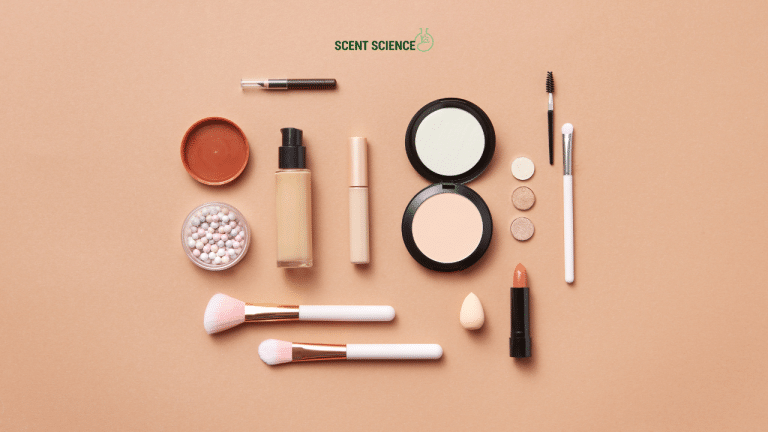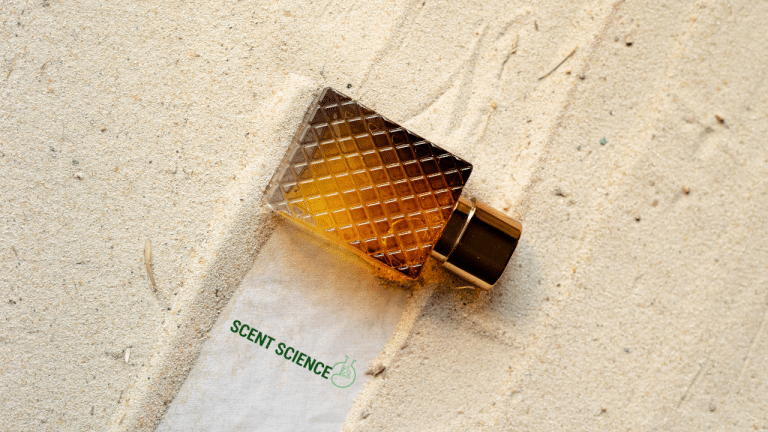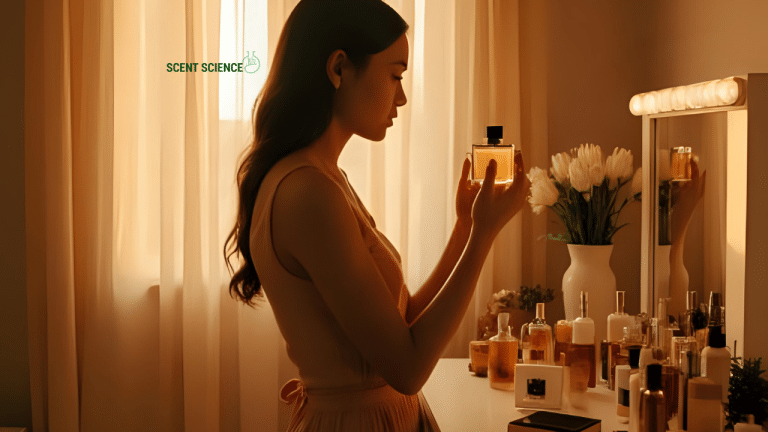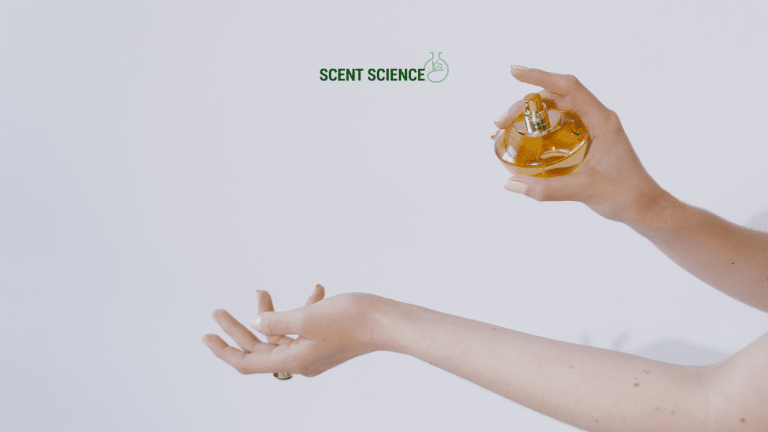Okay, let’s kick things off with a question we’ve all probably pondered but never really asked out loud. Why do fragrances smell different across the seasons? Especially when spring hits – everything just feels lighter, fresher, and let’s face it, a lot more alive. I’m talking floral blooms and morning dew, all wrapped up in a bottle of perfume. It’s like capturing a perfect spring day and making it your personal scent. Cool, right?
So, what’s the secret sauce behind this sensory magic? Well, it turns out, the chemical composition of fragrances plays a huge part. That’s what we’re diving into today. Trust me, once you understand the science and art of spring fragrances, you’ll have a newfound appreciation the next time you spritz a floral or citrus concoction. It’s your chance to become a scent connoisseur in your circle.
Table of Contents
ToggleUnderstanding Spring Fragrances: The Basics
So, here’s where we start: spring fragrances and their chemical makeup. In the art of fragrance creation, each season invites a different profile of scents. Spring is like the cocktail hour of the fragrance world, where everything is fresh, anticipated, and slightly intoxicating (but in a good way).
Why Spring Scents Are Special
When it comes to spring scents, the focus is more on liveliness. The air is getting warmer, flowers begin to shake off the winter blues, and everything is renewing. Fragrances mirror this by utilizing top notes that are light and effervescent. Think citrus, green notes, and lighter florals like jasmine and lily of the valley. These essences are dominantly captured through volatile molecules: the ones that evaporate quickly and give you an instant olfactory hit.
Key Components of Spring Fragrances
- Top Notes: These are your first impressions. In spring fragrances, they’re usually citrusy, such as lemon or bergamot. Their molecules are smaller, meaning they evaporate quickly, but they’re perfect for that fresh first scent.
- Middle Notes (Heart Notes): As the top notes are wearing off, the middle notes start to unfold. For spring, these middle notes bring out floral melodies, with jasmine, rose, or lavender often taking the lead. They’re what you sense for the most significant part of the fragrance’s lifespan.
- Base Notes: They anchor the perfume, adding richness and depth. While spring prefers to flirt with lighter undertones like sandalwood or musk rather than the heaviness of amber or patchouli, they hold everything together, ensuring the scent lingers longer.
A Peek Inside Fragrance Families

Spring fragrances fall into particular fragrance families that complement the season’s nature. There’s the floral family, of course, but don’t overlook the fresh and green categories. Here’s how they stack up:
- Floral: Rose, lily, and narcissus are just some of the bloomers bursting through.
- Fresh/Marine: Think of an ocean breeze, slightly salty but clean and invigorating. Accomplished with aquatics and a dash of aldehydes.
- Green: Feels almost herbal with the likes of bamboo and tea leaves in the mix. Ever crushed a leaf between your fingers? That essence captured; that’s green.
—
Why Chemical Composition Matters
Alright, let’s geek out for a moment, because understanding the chemistry behind the scent can deepen your appreciation. What you might not know is that beyond merely pleasing the nose, these compositions can influence our mood, energy, and even serve as mild stress relievers. I know, right? Mother Nature has a sense of humor making us this way.
Organic Compounds Galore
It’s the organic compounds that do the heavy lifting. Ever heard of esters and aldehydes? These guys are responsible for the fruity and citrus notes and are often found in spring fragrances, offering that zingy boost that mirrors the sun’s return.
- Esters: These dudes are created in a chemical reaction between an alcohol and an acid. They’re in those fruity top notes like pineapple or apple. Remember those?
- Aldehydes: You’ve surely heard the term in old crime shows, but here they carve out a sophisticated, slightly metallic edge that just adds that something extra to fragrances.
Esters and aldehydes are particularly fitting for spring because their brightness and volatility match the general ambiance of the season’s air—just abundant with new beginnings.

Perfume and Climate: Does it Really Matter?
You bet it does! The warmer temps influence how a fragrance will perform on your skin. Essentially, heat amplifies the most volatile notes of a fragrance, meaning your spring pick can be as revealing as you’d like. Knowing this won’t just save you some awkward sniff tests; it’ll also help you choose the right concentration. Opt for eau de toilettes over parfums for a light, season-appropriate refresh.
Tables and Trials: Finding Your Signature Spring Scent
Let’s talk practical steps now:
**Step 1: Identify What You Love** – Floral, Green, or Fresh? Consider past favorites. A notebook might be your best tool for this one.
**Step 2: Test Drive and Observe** – Apply a small amount to your wrist; sights can be deceiving, and tomorrow’s variant might be one that irritates. – Wait at least 30 minutes before making a decision. Perfumery’s true face reveals itself only after its layers develop on the skin.
**Step 3: Seasonal Spenditure (Yup, that’s a word! In our convo, at least)** – Choose a couple of staple scents rather than a cabinet full. Trust me, less is often more in the fragrance world. Plus, you’ll actually get through them before they turn.
—
Talk the Fragrance Lingo

If you’re diving into the world of fragrances with gleeful abandon, it’s going to be pretty helpful to get a grip on the jargon. From mispronouncing ‘chypre’ to knowing what a sillage is, wearing your newly discovered knowledge with confidence is crucial.
- Sillage: The scent trail left behind. A strong sillage means they know you’ve been in the room—and they’ll know when you’ve left.
- Chypre (pronounced sheep-ra): A citrus-woody-moss base. Popular but complex!
- Accord: Basically the harmony that different notes within a scent strike together. A good accord = musical olfactory beauty.
Spring Debuts: Noteworthy New Launches
Every spring welcomes a flurry of brand-new fragrances, each vying for your attention. While full disclosure, I can’t predict next year’s hottest launch, history tells us brands will mix novel concepts with tried-and-true ingredients fit for seasonal splendor. Now, given we’ve had unique spins with lavender or even rhubarb, what’s next is speculative—maybe daffodils are prime for discovery?
—
Wrapping it Up: Spring’s Signature Scent
Alright, let’s simplify it (though tracking fragrance trails is as exciting as it gets). There’s an unmistakable camaraderie in wearing a scent that binds your personal narrative with seasonal cues. Once you’ve picked your scent for the season with all the care and flair of a new wardrobe addition, sing it to the room.
The seasonal shift isn’t just reflected in changing the wardrobe but in the subtle yet mention-worthy transformation fragrances provide. Light, fresh, floral, or green—you don’t just wear the fragrance; you live in it. With spring fragrances, every aromatic drop can echo the vibrancy and potential of renewal in this sunlit season. Go figure it out, breathe it in, and revel in the poignant interplay of nature and chemistry greeting the new season with nose-first excitement.
So, what’s going to be your sunshine in a bottle this spring? Fancy mapping out that signature spring fragrance now? Go ahead and breathe life into your spring with distinctive, well-chosen scents that echo everything rejuvenating about the season of bloom.
Frequently Asked Questions
What are the characteristic notes of spring fragrances?
Spring fragrances are typically characterized by floral or green notes associated with freshness. Classic spring notes include rose, jasmine, raspberry, bergamot, linen, dew, and grass, which represent a time of renewal and fresh starts[1][4].
Which fragrance families are best suited for spring?
The fresh and floral fragrance families are best aligned with the spring season. These families include subcategories such as green, oceanic, citrus, fruity, and herbaceous notes, which capture the freshness and rejuvenation of spring[1][4].
What are some popular perfume options for spring?
Popular spring fragrances include those with notes of freshly bloomed flowers, bright citrus, and rich vanilla. Examples include Mugler’s Angel Elixir, Alien Goddess Eau De Parfum, and Czech & Speake’s Neroli and Mimosa Eau de Parfum, which capture the essence of spring flowers and freshness[1][4].
How should I choose a spring fragrance?
When choosing a spring fragrance, consider the flowers and produce in season and the scents you encounter in nature during spring activities. Look for light, airy, and floral scents that reflect the freshness and renewal of the season[1][4].
References







